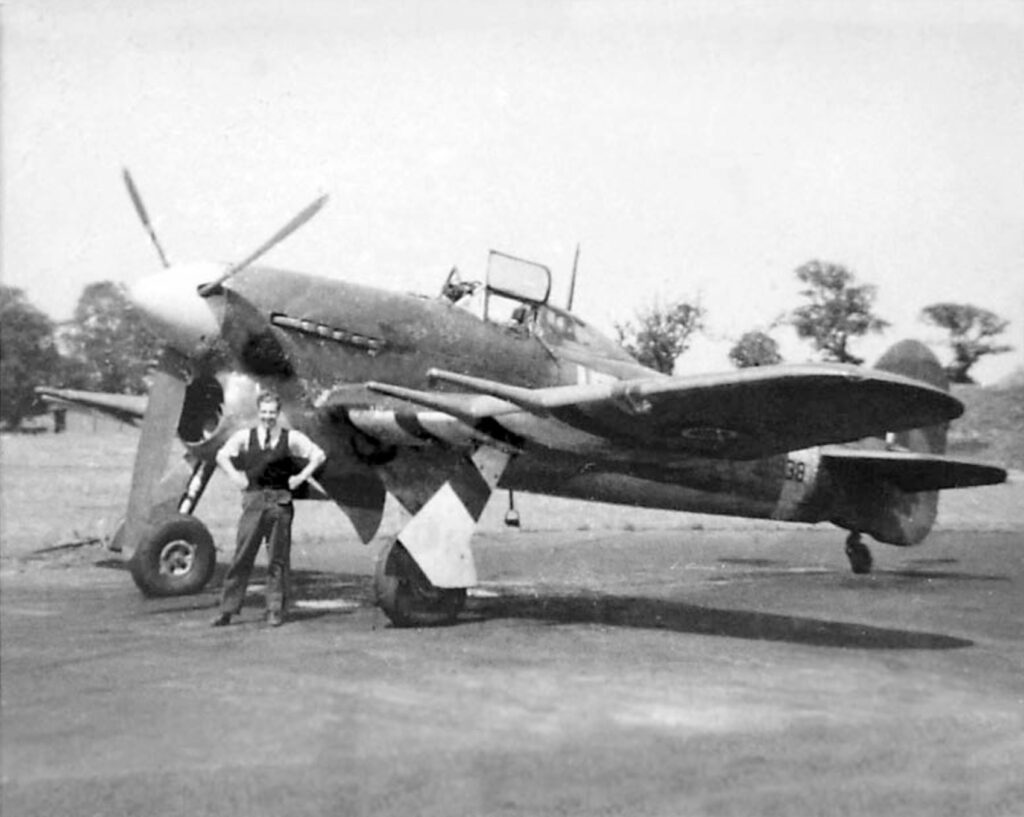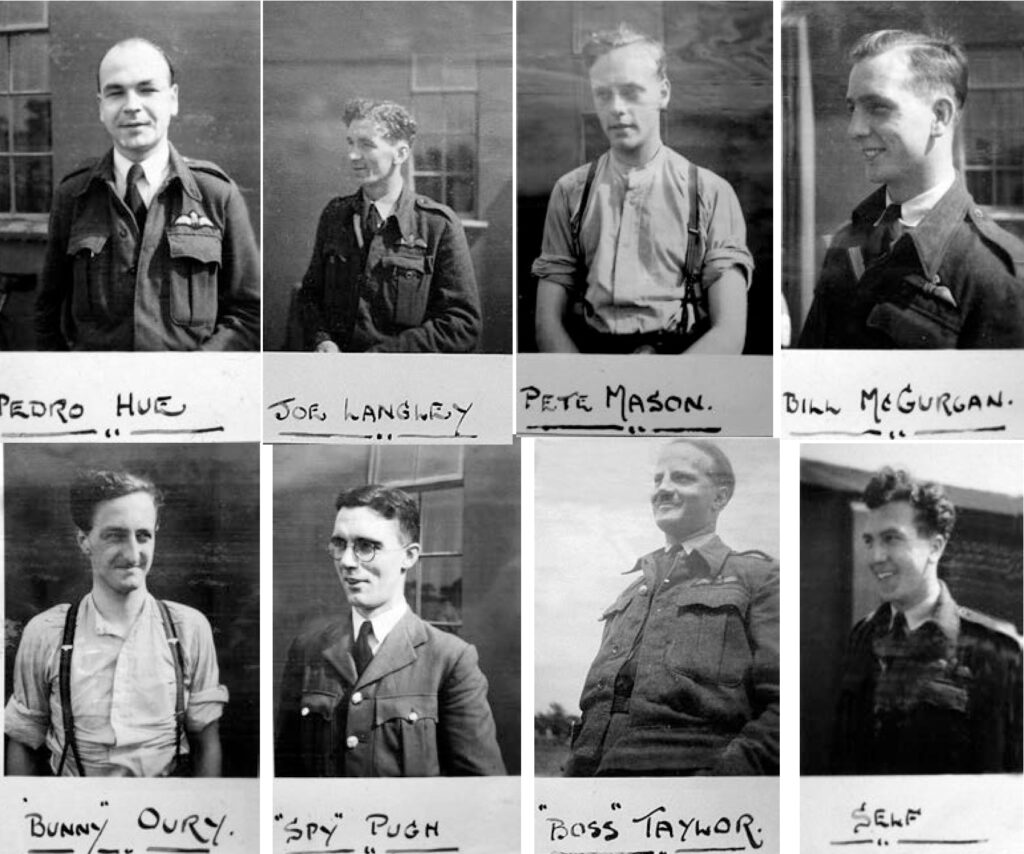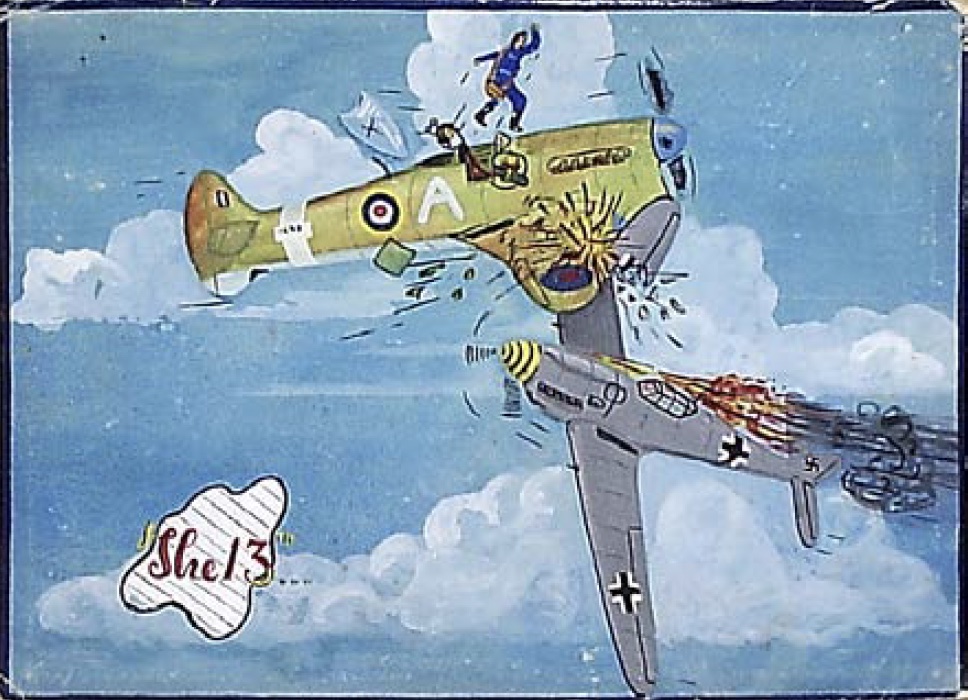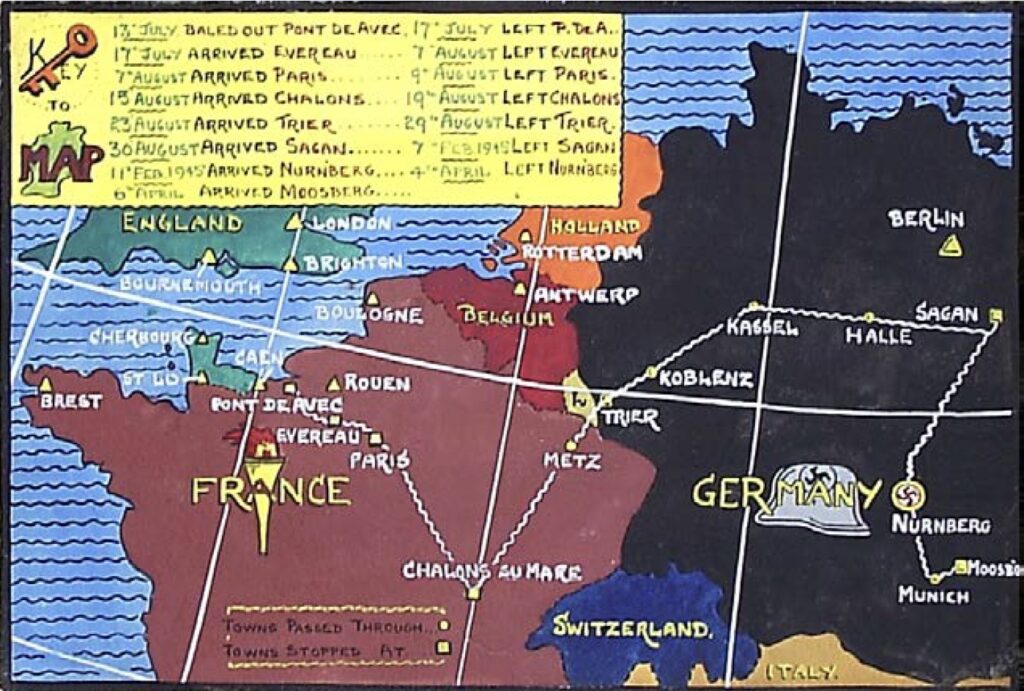
F/O Ken A. J. Trott RAF
Awarded his pilot’s wings in October 1942, Ken Trott joined 195 Typhoon Squadron from April 1943 to January 1944 and then was moved to 197 Squadron in February 1944 when 195 was disbanded. He became P.O.W. in July 1944 and was released in May 1945. Here is his own account of the experience.
In July 1944 I was stationed at Hurn Airfield near Bournemouth, having moved with 197 Squadron (Hawker Typhoons) from Needs Oar Point near Beaulieu in the New Forest, our base for the D-Day operations. At that time we were carrying out offensive operations over France in support of the troops now based in Normandy.

On 11th July we flew from Hurn to make our first landing on French soil at airfield B3 St. Croix as our base. This had been constructed with Somerfield Metal Tracking to provide a base for refuelling, rearming, plus tented accommodation. I mentioned to a friend that I was glad it was only Thursday the 13th and not Friday the 13th as we were flying back to England that evening.
It turned out to be one of the worst things I ever said, as I was at six o’clock, in the evening whilst on operations I collided with a Messerschmitt Bf 109 and after baling out (more like falling out) I was captured by the Germans to become a POW.
I had broken out of cloud and noticed a solitary Me109 coming in my direction. I lined up for a head-on attack, firing my four cannons and, the next minute I realised I would have to break to avoid a collision. As I did so, my starboard wing collided with the wing of the 109. I felt my head hit the cockpit cover and my left shoulder the side of the cockpit, my helmet, oxygen mask, goggles and revolver holster were torn from my body and I hurtled into space with only my parachute intact.
I realised I would have to pull my ripcord as my altitude was only about 3,000 feet. The next minute the canopy opened and I lost consciousness. When I came to, I found myself hanging from a tree in an orchard, surrounded by several armed Germans, one of whom was attempting to release me from the parachute harness. This he did and I fell on top of him to the ground where I lay for a while.

The German NCO motioned me to stand up and put my arms up, it was then that I felt that my left arm remained at my side, I could not move it in any way. We proceeded across a stream and fields to a French farmhouse where the Germans had their HQ. I was taken up some stairs and met a German officer seated behind a desk. I saluted him, a wise move, as I was then invited to sit down.

After a brief interrogation, I was asked if I felt well enough to be moved to hospital. I nodded and I then proceeded with an escort to an open-top car parked in a nearby farmyard. We set off with my escort and me in the back seat and after a few minutes, we arrived in the village of Pont-l’Eveque where I was taken to a schoolroom. By this time I was feeling rather unwell and coughing up blood.

The guard called for his superior and eventually, I was moved to a nearby chateau, part of a German military hospital. Over the next few weeks, I was moved onto Evreux, Paris, Trier (Luxembourg) and finally arrived at Stalag Luft III, Sagan, Germany at the end of September.
Ken’s Parents received a letter in July saying he was missing on operations after having been engaged by an enemy fighter. It was not until November they learned that their son was safe and well, albeit a POW.
After May 1945, Ken became an air traffic controller at Tangmere until demob in 1946. His total number of operational hours was 100.
F/O Kenneth Albert John Trott
Born: December 28, 1922, died: September 12, 2013
